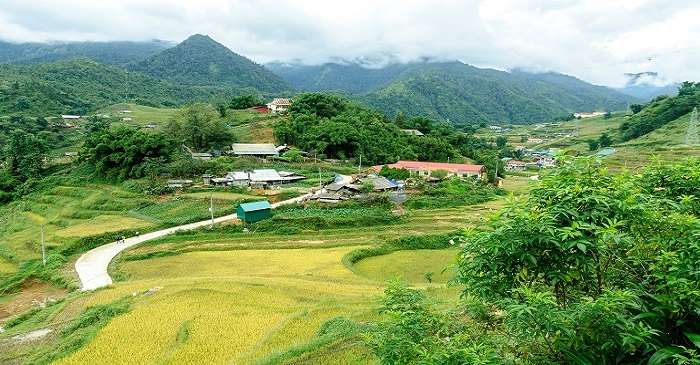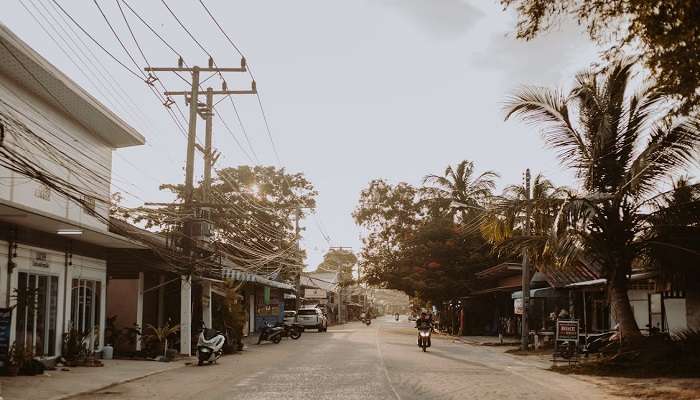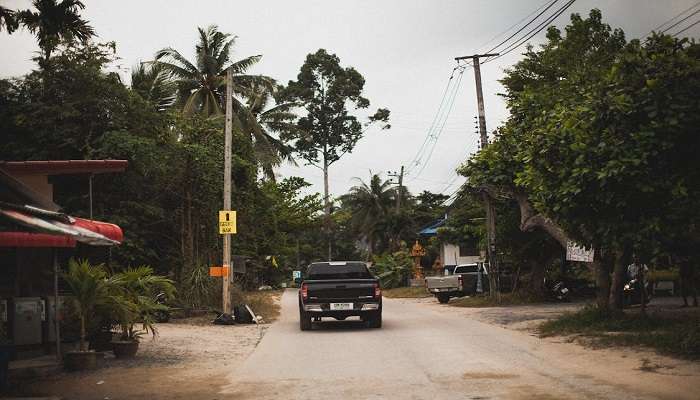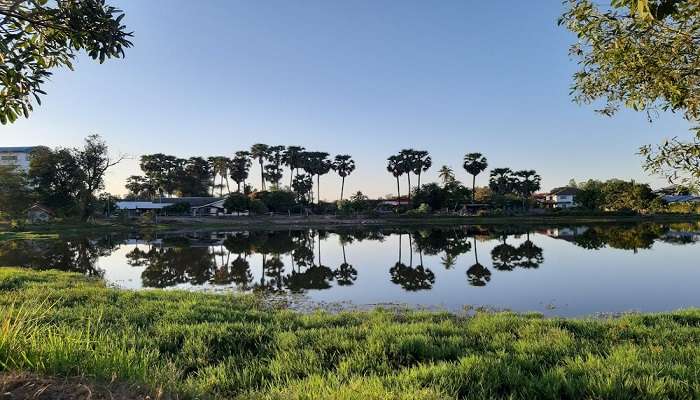Sin Chai Village Offer A Tranquil Escape In The Sapa Valley In 2025

Shrouded in the mist-laden embrace of the Hoang Lien Son mountains, Sin Chai Village unveils a captivating glimpse into the heart of Vietnamese ethnic culture. Untouched by the throngs of tourists that descend upon its neighbour, Cat Cat Village, Sin Chai offers a haven of serenity where time seems to stand still. Here, life unfolds gently, allowing visitors to truly immerse themselves in the rich tapestry of the Black Hmong people’s traditions, customs, and deep connection to their environment. Sin Chai Village exudes an air of authenticity, inviting travellers to shed the fast pace of modern life and embrace the simple beauty of a bygone era.
About Sin Chai Village

Situated in northern Vietnam, Sin Chai Village is located in the Sapa district of Lao Cai province. It rests at an elevation of 1,450 m above sea level and is a place most tourists visit to unwind, relax and bask in the slow-paced life like the people around. Besides dense forests, the village stands out for its terraced rice fields and lush green hills on all sides. As for the inhabitants, the majority of the population is of the native Black Hmong tribe, who make up one of the ethnic minorities across Vietnam.
One of the unique facts about the village is its division. The village is segregated into two parts—Sin Chai A and Sin Chai B. Irrespective of the section of the village you visit, each spot offers unique experiences to its visitors. While the village remains largely unspoiled by modern tourism, it provides basic amenities to ensure a comfortable stay for visitors. Sin Chai offers its visitors a chance to slow down and reconnect with nature among the hustle and bustle of fast-paced city life.
Also Read: Resorts In Hoi An
History Of Sin Chai Village

As briefly mentioned, the Sin Chai Village is predominantly inhabited by the Black Hmong tribe. So, when discussing the Sin Chai village history, it is heavily intertwined with their immigration and life in the village. The Black Hmong tribe immigrated from South China to Vietnam, Laos, and Thailand over several centuries to improve their quality of life and escape the ongoing conflicts. Following their relocation to the Village, the Black Hmong tribe has closely preserved their cultural heritage and traditional way of life despite the changes brought about by modernity.
Unlike other remote locations in Vietnam, Sin Chai village has remained isolated for years. This has contributed to the slow-paced life and enabled the local tribe to maintain their traditions and customs. The village’s history is reflected in its architecture, traditional farming methods, and the vibrant textiles produced by the local women. These textiles are often adorned with intricate patterns and dyed using natural indigo, showcasing the craftsmanship passed down through generations.
Best Time To Visit The Village

When planning a trip to Vietnam, you would like to visit during the time of the year when the temperatures are comfortable and the rainfall is minimal. The spring season, from March to May, is the best period. The blend of lush greenery with blooming flowers all around adds to the beauty and charm of the village.
If you are particularly visiting the village to witness the terraced rice fields in their prime, you’d need to plan your visit between June and August. However, be prepared for occasional rainfall and muddy trails. Winter in Sin Chai from December to February can be cold, especially at night. The landscape may be less vibrant, but the clear skies provide excellent views of the surrounding mountains. This season is perfect for those who enjoy a quieter, less crowded experience.
Related Post: Heritage Sites In Vietnam
Things To Do In Sin Chai Village

Once you reach Sin Chai Village Vietnam, you will find a treasure trove of experiences. What’s alluring about the whole experience is that most of the things you do in the village are closely related to its natural beauty, culture and traditions.
Immerse In The Local Culture: Sin Chai Village beckons you to explore the local culture and traditions associated with the Black Hmong tribe. These include one of the warmest people you will come across, who will happily tell you about their local traditions. Witness the intricate art of textile weaving, where women skilfully transform threads into wearable items. You can also take the time to witness traditional farming practices and learn about the villagers’ deep respect for their land.
Hike Through The Nature Trails: Hiking and adventure activities are pretty standard across Sin Chai Village. You can spend the time on beginner-level hikes through the village and the surrounding rice terraces. As you explore the dense forest and nature trails, breathe in the clean mountain air to cleanse and rejuvenate your soul. The panoramic views of the Hoang Lien Son mountains add to the experience further.
Homestay Experience: Although relatively few, there are a few homestay experiences across the Village. Living in one of the homestays in the village enables you to truly connect with nature and the slow-paced way of life, much like the locals. You get to share meals with the local families and taste the authentic local delicacies that are native to the tribe and the village as well.
Learn The Art Of Textile Weaving: One of the most popular activities that Black Hmong people earn from is textile weaving and farming. While you can visit the local farmers’ fields to see how they harvest the paddy, you have to sit with the women in the families and learn the art of textile weaving with them. Some of them host workshops and will happily teach you the ropes of the art. The best part is that you get to create something from scratch and take it home as a souvenir.
How To Reach Sin Chai Village?

Reaching Sin Chai Village, Vietnam, isn’t a complicated affair, provided you follow the specified routes. One of the most common travel options is a 40-minute scenic hike from Sapa Town through the picturesque Muong Hoa Valley. The well-marked trail towards Cat Cat Village provides a clear starting point, with a detour to the right leading you towards Sin Chai.
If that’s not something that you want to indulge in, the next best option is to take a motorbike taxi from Sapa Town to reach the village. The faster route will let you get the village in under 10 minutes.
You May Also Like To Read: Best Beaches In Vietnam
Sin Chai Village welcomes the traveller seeking an authentic cultural experience. It’s where time slows down, inviting you to connect with nature, immerse yourself in local traditions, and discover the essence of Vietnamese mountain life. So, lace up, pack your bags and plan your next trip to Vietnam to explore the true nature of the Black Hmong tribe in the village.
For our editorial codes of conduct and copyright disclaimer, please click here.
Cover Image Source: Shutterstock
Frequently Asked Questions About Sin Chai Village
What language is spoken in Sin Chai Village?
The primary language spoken in Sin Chai Village is the locals understand Black Hmong, a tonal language distinct from Vietnamese. English due to the heavy tourist flow.
What are some things to keep in mind when visiting a homestay in Sin Chai?
Indulging in a homestay experience at Sin Chai offers a unique experience but comes with a few restrictions. Ensure to be respectful of the local culture and traditions and adjust to the customs of the locals.
What is the Sin Chai Village Timings?
There are no Sin Chai Village timings. You can visit the village at any time. However, ensure to visit during daylight hours for better views and to arrange your stay if you are planning to stay for more than a day.
What currency is used in Sin Chai Village?
The Vietnamese Dong (VND) is the official currency. Since life is slow in the village, carrying cash is always recommended.
What kind of food can I expect in Sin Chai Village?
You can expect traditional Hmong cuisine, which includes dishes made from locally sourced ingredients such as rice, vegetables, and meat.
People Also Read:
Veli Tourist Village Pathauli Village Sari Village

With a passion for exploring and travelling to the roads long forgotten, experience the world through enthralling stories and adventures. Join me as I share my experiences at some of the world’s most popular tourist destinations and quench that pestering curiosity with something exciting!











